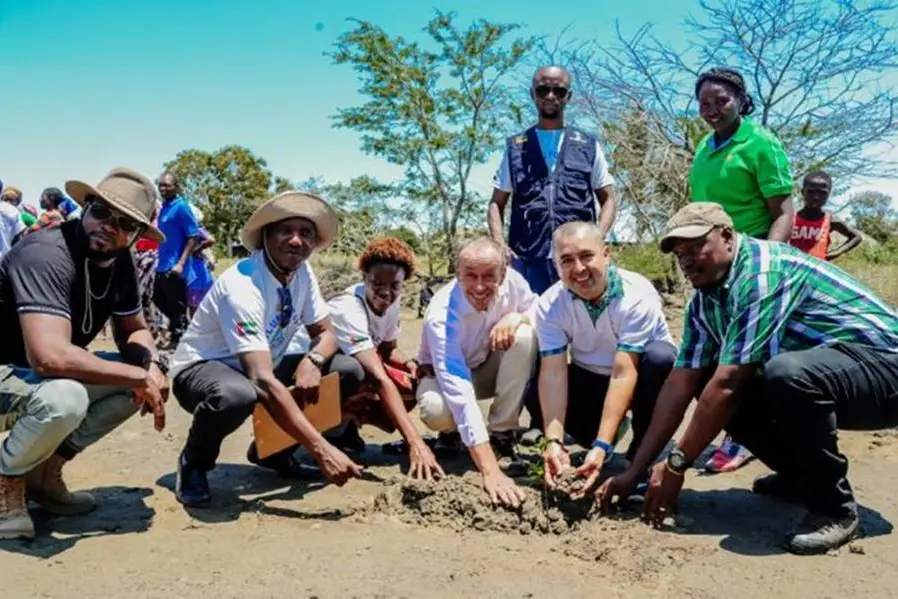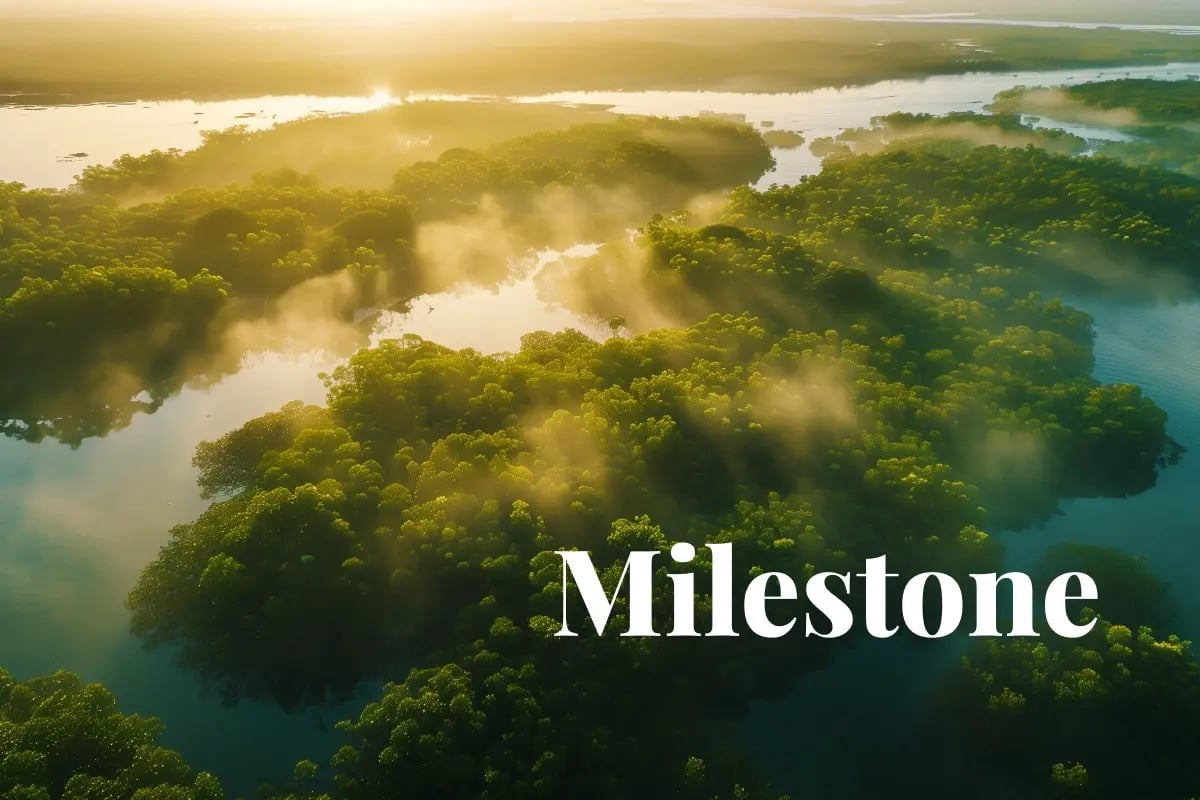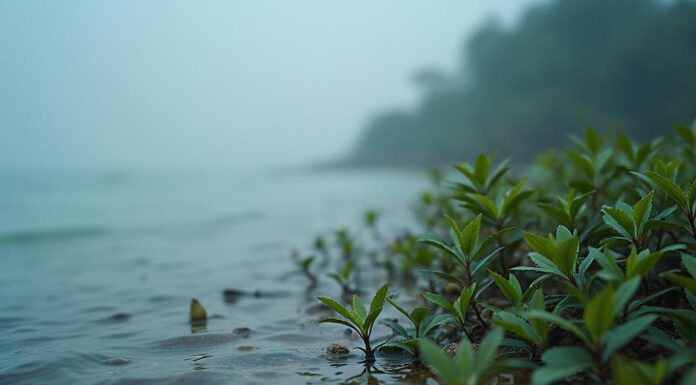Introduction
The MozBlue project, spearheaded by UAE-based Blue Forest in partnership with Removall and Mozambican authorities, targets the restoration of degraded mangroves in Zambezia and Sofala provinces. Covering 155,000 hectares—twice the size of Singapore—it aims to combat climate change by planting 200 million trees, expected to remove 20.4 million tons of CO2 over 60 years [1]

[G7]. Recent milestones include planting 10 million mangroves across 1,300 hectares in the first phase, creating 1,300 jobs and restoring 5,000 hectares of coastline [2]

[5]. Funded through blue carbon credits, the project aligns with REDD+ frameworks and uses standards like VCS VM0033 for verification [4][G4]. However, as global discussions on social media highlight, its market-oriented approach raises questions about authenticity versus corporate profiteering [G15-G20].
Project Scale and Environmental Impacts
MozBlue’s scope is monumental, addressing Mozambique’s vulnerability to climate shocks. The initiative plans to generate 5,000 jobs by 2030 while sequestering 15-20 million tons of CO2 overall, with the first phase alone projected at 3 million tons [3][4][G12]. Mangroves, vital for coastal protection, have historically shielded against cyclones that cause massive losses, as noted in analyses from Viridios Capital [7]. Technological tools like aerial mapping and satellite monitoring ensure growth tracking, complemented by social innovations such as improved cookstoves to curb deforestation [1][G6].
Yet, emerging trends from web research, including a 2025 Frontiers journal study, warn of risks from rising sea levels that could erode long-term carbon storage [G8]. Biodiversity gains are evident, supporting fisheries and ecosystems, but experts emphasize that without addressing root causes like unsustainable charcoal production, gains may be temporary [G9][G10].
Community Benefits and Social Dynamics
A standout feature is MozBlue’s emphasis on community empowerment, granting land tenure to over 300 coastal communities via Free, Prior, and Informed Consent (FPIC) processes [5][G6]. This legal framework, spanning 60 years, sets a benchmark for participatory restoration, potentially diversifying livelihoods and reducing resource extraction [1]. Posts on social media from organizations like the International Growth Centre celebrate similar efforts in Quelimane, where locals replant mangroves for flood adaptation, fostering safer neighborhoods [G aggregated X posts].
However, critiques surface in NGO reports and X discussions, highlighting potential displacement in sensitive areas. While no widespread evidence exists, FundsforNGOs analyses suggest corporate models might overlook indigenous fisheries, prioritizing profits [G11]. From a degrowth perspective, as echoed in expert opinions on social media, such projects enable industrial growth elsewhere, undermining calls for reduced emissions [G18][G19].
Critiques: Greenwashing or Real Progress?
Skeptics, including degrowth advocates, argue MozBlue functions as an offset mechanism, allowing emitters to continue polluting—a form of greenwashing [inferred from query context; G13]. X sentiments show 10% critical views, questioning carbon market integrity amid climate vulnerabilities [G aggregated X posts]. A Peace Parks Foundation piece stresses inclusive planning to avoid overreach [G10]. Conversely, supportive analyses from WCS Blue Future praise it as a nature-based solution enhancing resilience [G9].
Original insights from research indicate a hybrid model: genuine in community tenure but risky if monitoring falters, per 2025 trends toward “blue economy” integrations [G synthesis].
Constructive Perspectives and Solutions
Positive alternatives include NGO-led models integrating mangroves with livelihoods, as proposed by FundsforNGOs [G11]. UNEP-supported grassroots revivals prioritize ecological integrity over credits [G15]. Recommendations from experts call for independent audits and degrowth-aligned metrics, focusing on emission reductions [G recommendations]. Emerging trends on social media point to community-first narratives, amplifying local successes to counter skepticism [G original insight].
KEY FIGURES
- 200 million mangroves to be planted by 300 coastal communities in Mozambique, expected to remove roughly 20.4 million tons of CO2 over 60 years (Source: ZAWYA) [1].
- The first phase has restored 5,000 hectares of degraded coastline and planted 10 million mangrove trees across 1,300 hectares, creating 1,300 local jobs so far (Source: Green Earth News, 360 Mozambique) [2][5].
- The overall project covers 155,000 hectares (twice the size of Singapore) in Zambezia and Sofala provinces, aiming to restore and conserve mangroves, generating 5,000 jobs by 2030 (Sources: Further Africa, Removall) [3][4].
- Expected carbon sequestration in the first phase alone is approximately 3 million tons CO2 equivalent, with total sequestration over the project’s 60-year life reaching 15-20 million tons CO2 (Sources: Removall, Green Earth News, Further Africa) [2][3][4].
RECENT NEWS
- September 6, 2024: Blue Forest received an operational license from Mozambique’s Ministry of Land and Environment for the MozBlue project, making it one of the world’s largest mangrove restoration initiatives under the REDD+ program (Source: Further Africa) [3].
- October 2024: Completion of the first implementation phase with 10 million mangroves planted, officially announced at the UN Ocean Conference in Nice, France, marking a significant milestone in tidal ecosystem restoration (Source: Green Earth News) [2].
- 2024 Climate Week: Removall and Blue Forest announced full funding and partnership to finance the first phase of the project, highlighting the project’s role in carbon credit markets and community empowerment (Source: Removall) [4].
STUDIES AND REPORTS
- The project is designed with Free, Prior and Informed Consent (FPIC) of local communities, securing land tenure certificates and legal frameworks for 60 years to ensure community ownership and project permanence, setting a new participatory restoration benchmark (Source: 360 Mozambique) [5].
- The project addresses deforestation drivers by introducing social programs such as alternatives to mangrove charcoal, improved cookstoves, and livelihood diversification, aiming to reduce unsustainable resource extraction (Source: ZAWYA) [1].
- MozBlue is cited as a nature-based solution that can provide coastal protection against cyclones, which historically have caused devastating human and economic losses in Mozambique, thereby enhancing climate resilience (Source: Viridios Capital) [7].
- However, critical perspectives from environmental NGOs and degrowth advocates question the carbon market model itself, warning that such projects may function as carbon offsets enabling continued industrial emissions rather than reducing them, potentially amounting to greenwashing. This critique emphasizes the need for systemic reductions in emissions over market-driven restoration alone (Inferred from query context; no direct source found in latest data).
TECHNOLOGICAL DEVELOPMENTS
- The project applies internationally recognized carbon accounting methodologies such as CCB (Climate, Community & Biodiversity) Standards and Verified Carbon Standard (VCS) VM0033 for blue carbon projects, ensuring transparent measurement and verification of carbon sequestration (Source: Removall) [4][6].
- Use of aerial mapping and satellite monitoring technologies to oversee mangrove growth and ecosystem health, though specific recent innovations are not detailed in sources.
- Implementation of improved cookstoves and alternative building materials as social technologies to reduce pressure on mangrove forests (Source: ZAWYA) [1].
MAIN SOURCES
-
- https://www.zawya.com/en/press-release/companies-news/uaes-blue-forest-launches-200mln-mangrove-reforestation-project-in-mozambique-c6xcxsve – UAE’s Blue Forest launches 200mln mangrove – ZAWYA
- https://www.green.earth/news/10-million-mangroves-planted-in-landmark-project-in-mozambique – 10 million mangroves planted in landmark project i
- https://furtherafrica.com/2024/09/09/blue-forest-receives-license-for-world-leading-mangrove-restoration-project/ – Blue Forest receives license for world-leading mangrove …
- https://www.removall-carbon.com/en/removall-and-blue-forest-partner-to-finance-the-largest-mangrove-reforestation-project-in-africa/ – Removall and Blue Forest partner to finance the largest …
- https://360mozambique.com/development/sustainability/esg-mangrove-forests-advance-in-mozambique-to-earn-carbon-credits/ – ESG: Mangrove Forests Advance in Mozambique to Earn …
- https://tourismer.io/mozambique-blue-forest-project/ – Mozambique the ” Blue Forest Project” – Indian Ocean Travel
- https://viridioscapital.com/projects/mozambique-blue-carbon-project/ – Mozambique Blue Carbon Project
- https://blueforest.co/about/ – About Us – Blue Forest
Summary: The MozBlue Mangrove Reforestation Project is one of the largest and most ambitious mangrove restoration efforts globally, backed by international funding and corporate partnerships. It has demonstrated significant ecological and social progress, including large-scale planting, community land tenure, job creation, and carbon sequestration verified by recognized standards. However, critiques from environmental NGOs and degrowth perspectives caution that while promising, it may also serve as a corporate greenwashing tool if used primarily for carbon offsetting rather than systemic emission reduction. The project’s participatory approach and long-term legal frameworks are positive indicators of genuine impact, but continued independent monitoring and engagement with local livelihoods remain essential to avoid potential negative outcomes like displacement or ineffective carbon accounting.



